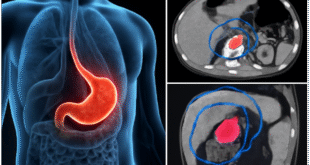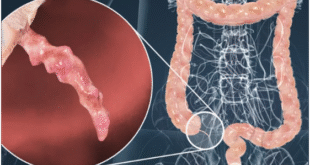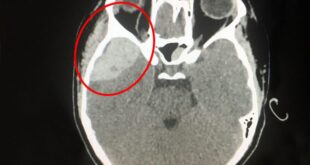Bàn chân đái tháo đường #2
Đây là chuyên đề sau đại học dành cho cho BSNT và học viên cao học. Các bạn SV quan tâm cũng có thể đọc vì có nhiều vấn đề rất hay.
Theo ý kiến của Thầy hướng dẫn thì có thể chia sẻ PDF nên mình chuyển từ PDF sang ảnh và upload lên đây cho các bạn dễ đọc.
Nói chung bệnh lý bàn chân có nhiều thể, PAD, DFUs, DF… bài này giúp chúng ta 1 phần hiểu thêm về đặc điểm, cách đánh giá và điều trị.
Sau khi đọc bài này xong, các bạn xem thêm phần tham luận tại: https://www.facebook.com/…/permalink/1172156943230262/
![[Y học lâm sàng - BSNT] Bàn chân đái tháo đường #2 Có thể là hình ảnh về văn bản cho biết 'ਵচ 1957 MUE TRƯỜNG ĐẠI HỌC Y DƯỢC HUẾ BỘ MÔN NỘI CHUYÊN ĐỀ SAU ĐẠI HỌC BỆNH ĐỌNG MẠCH CHI DƯỚI MẠN TÍNH Ở BỆNH ĐÁI THÁO ĐƯỜNG TYPE 2 Giáo viên hướng dẫn: GS.TS. NGUYỄN HẢI THỦY Học viên thực hiện: BSNT. VÕ THANH TRANG HVCH. TRẦN THỊ HỒNG VÂN'](https://scontent.fsgn5-5.fna.fbcdn.net/v/t1.6435-9/192538894_3536417443250587_6840680639164751463_n.jpg?_nc_cat=100&ccb=1-5&_nc_sid=b9115d&_nc_ohc=zRCjhOX-SYAAX8C0Pn5&_nc_ht=scontent.fsgn5-5.fna&oh=f5834f556949d87c54edcf97fbded024&oe=61C68909)
![[Y học lâm sàng - BSNT] Bàn chân đái tháo đường #2 Có thể là hình ảnh về văn bản cho biết 'Nội dung chuyên đề ·1. Dịch Tể Học ・2.Yếu Tố Nguy cơ •3.Phân loại ·4. Cơ chế bệnh sinh ·5. Lâm sàng •6.Cận lâm sàng •7.Chẩn đ‘oá¡n ·8. Điều trị'](https://scontent.fsgn5-11.fna.fbcdn.net/v/t1.6435-9/192738455_3536417436583921_8940746157668927242_n.jpg?_nc_cat=111&ccb=1-5&_nc_sid=b9115d&_nc_ohc=Q3BVy6BGxgUAX_Q2Ltj&_nc_ht=scontent.fsgn5-11.fna&oh=189f3e6d6aa4a4e1334c79c379800ada&oe=61C48FEB)
![[Y học lâm sàng - BSNT] Bàn chân đái tháo đường #2 Có thể là hình ảnh về bản đồ và văn bản cho biết '1. DỊCH TỂ HỌC Number of people (20-79 years) with diabetes globally and by IDF Region North America 2045 million 56 million 2019 48 million Caribbear 33% increase South Central America 55% 2019 Europe million million million 2030 2019 15% increase Africa East Asia 2045 153 million 115 million 88 million 74% ancrease Middle 143% increase million North Africa 96% increase 2019 million million Western Pacific International Diabetes Federation 31% ncrease 163 IDF 2019 atlas@idf.org www.diabetesatlas.org'](https://scontent.fsgn5-5.fna.fbcdn.net/v/t1.6435-9/194886593_3536417453250586_8407077478244183681_n.jpg?_nc_cat=100&ccb=1-5&_nc_sid=b9115d&_nc_ohc=PsOAnRTw0vgAX8Yk4CC&_nc_ht=scontent.fsgn5-5.fna&oh=98d67bdc88f4e76866bce41157728e2e&oe=61C47843)
![[Y học lâm sàng - BSNT] Bàn chân đái tháo đường #2 Có thể là hình ảnh về văn bản](https://scontent.fsgn5-8.fna.fbcdn.net/v/t1.6435-9/194482011_3536417556583909_2995973260607477666_n.jpg?_nc_cat=103&ccb=1-5&_nc_sid=b9115d&_nc_ohc=9v98orcDbbcAX-oiOci&_nc_ht=scontent.fsgn5-8.fna&oh=fe2bfd5647fec073e5829be2b4ed1e85&oe=61C556F1)
![[Y học lâm sàng - BSNT] Bàn chân đái tháo đường #2 Có thể là hình ảnh về văn bản cho biết '1. DỊCH TỂ HỌC Estimations and projections of the number of people (20-79 years) with diabetes in different editions (millions) 578 Millions 700 2040 463 438 2035 650 552 2030 (200) 415 382 366 550 2025 2015 2017 2013 285 380 246 194 333 151 2003 2000 ဝ Estimates Projections (year made)'](https://scontent.fsgn5-8.fna.fbcdn.net/v/t1.6435-9/192189845_3536417553250576_7772204678559198302_n.jpg?_nc_cat=103&ccb=1-5&_nc_sid=b9115d&_nc_ohc=SToRL87ks9YAX_4dhJt&_nc_ht=scontent.fsgn5-8.fna&oh=c9b92ed6d590450dadc0013bc54de7f3&oe=61C71248)
![[Y học lâm sàng - BSNT] Bàn chân đái tháo đường #2 Có thể là hình ảnh về văn bản cho biết '1. DỊCH TẾ HỌC .Theo TCYTTG năm 2000 Việt Nam có 791,653 người mắc bệnh ĐTĐ dự kiến sẽ tăng lên 2.342.879 người vào năm 2030. Theo nghiên cứu của Bệnh viện Nội tiết Trung ương: -Năm 2002: 2,7% dân số mắc ĐTĐ -Năm 2008: 5% -Năm 2012: điều tra tại 6 vùng trên cả nước tỷ lệ này đã tăng lên gần 5,7%. lệ mắc ĐTĐ khác nhau theo vùng. Năm 2002, thành phố chiếm 4,4%, đồng bằng chiếm 2,7%, trung du chiếm 2,2%, miền núi chiếm 2,1%'](https://scontent.fsgn5-3.fna.fbcdn.net/v/t1.6435-9/195412729_3536417603250571_4700442857856178085_n.jpg?_nc_cat=104&ccb=1-5&_nc_sid=b9115d&_nc_ohc=IBgdQUUvI_oAX-L678b&_nc_ht=scontent.fsgn5-3.fna&oh=d0b27a4bda9e79c28c1dc0948e567064&oe=61C67A13)
![[Y học lâm sàng - BSNT] Bàn chân đái tháo đường #2 Có thể là hình ảnh về văn bản](https://scontent.fsgn5-11.fna.fbcdn.net/v/t1.6435-9/192229577_3536417673250564_6998882275173183914_n.jpg?_nc_cat=111&ccb=1-5&_nc_sid=b9115d&_nc_ohc=uH1kYYgIpCcAX90EJsb&tn=wGsKowJx8VG0Zygr&_nc_ht=scontent.fsgn5-11.fna&oh=dc525653699bd2b26c3c131226bc10a0&oe=61C42D3A)
![[Y học lâm sàng - BSNT] Bàn chân đái tháo đường #2 Có thể là hình ảnh về văn bản](https://scontent.fsgn5-10.fna.fbcdn.net/v/t1.6435-9/193756616_3536417679917230_7730957755157336849_n.jpg?_nc_cat=107&ccb=1-5&_nc_sid=b9115d&_nc_ohc=Q9So0VBxuQAAX-NZfdM&_nc_ht=scontent.fsgn5-10.fna&oh=4d2987a9b4b7bafd67b0531af0a31413&oe=61C52C12)
![[Y học lâm sàng - BSNT] Bàn chân đái tháo đường #2 Có thể là hình ảnh về văn bản cho biết '1. DỊCH TẾ HỌC .Khoảng 50% số người có BĐMCD không có triệu chứng, trong khi 33% không triệu chứng điển hình. BĐMCD ảnh hưởng đến hơn 200 triệu người trên toàn cầu. Theo khảo sát IDF 2019, tỷ lệ mắc BĐMCD tăng lên 29% ở những người trên 50 tuổi mắc Đái tháo đường [1] 1.IDFAtlasDiabetes2019 IDF Atlas 2019'](https://scontent.fsgn5-5.fna.fbcdn.net/v/t1.6435-9/192913141_3536417719917226_7739039826530627369_n.jpg?_nc_cat=100&ccb=1-5&_nc_sid=b9115d&_nc_ohc=JayRybd97rcAX9z7YSW&tn=wGsKowJx8VG0Zygr&_nc_ht=scontent.fsgn5-5.fna&oh=ecb5bbabf55828419202cd46a8a94c22&oe=61C714A1)
![[Y học lâm sàng - BSNT] Bàn chân đái tháo đường #2 Có thể là hình ảnh về văn bản cho biết '2. YÉU TÓ NGUY cơ Table 3. Patients at Increased Risk of PAD Age >65 Age 50-64 y, with risk factors for atherosclerosis (eg, diabetes mellitus, history of smoking, hyperlipidemia, hypertension) or family history of PAD52 Age <50 y, with diabetes mellitus and 1 additional risk factor for atherosclerosis Individuals with known atherosclerotic disease in another vascular bed (eg, coronary, carotid, subclavian, renal, mesenteric artery stenosis, or AAA) AAA indicates abdominal aortic aneurysm; PAD, peripheral artery disease. AHA/ACC Guideline on the Management Patients With Lower Extremity Peripheral Artery Disease (2016),A Report American College Cardiogy/AmericanHeartAociation Force on Clinical Practice Guidelines'](https://scontent.fsgn5-11.fna.fbcdn.net/v/t1.6435-9/193779722_3536417763250555_8581695707165974028_n.jpg?_nc_cat=111&ccb=1-5&_nc_sid=b9115d&_nc_ohc=AgNMMn02TFEAX8yzOxk&_nc_ht=scontent.fsgn5-11.fna&oh=e086830db751bad878cbd56826d0f708&oe=61C33924)
![[Y học lâm sàng - BSNT] Bàn chân đái tháo đường #2 Có thể là hình ảnh về văn bản cho biết 'Động mạch bình thường Động mạch xơ maub Thành mạch Giảm ưu lượng mâu 0 ·BĐMCD: Tắc nghẽn một phần hoặc toàn bộ của một hoặc nhiều động mạch chi dưá›i [1] Cơ chế bệnh sinh: nổi bật là Xơ Vữa Động Mạch (ĐTĐ type 2) Động mạch chocl chidu dưái- màu Màng xovừa Động mạch cất ngang Động mạch bị hẹp 1.Norman PE, Davis WA, Bruce DG, Davis TM (2006), Peripheral arterial disease and risk of cardiac death in type diabetes: the Fremantle Diabetes Study. Diabetes Care'](https://scontent.fsgn5-9.fna.fbcdn.net/v/t1.6435-9/192249971_3536417769917221_2968615239133135345_n.jpg?_nc_cat=105&ccb=1-5&_nc_sid=b9115d&_nc_ohc=gLKvSBkgkn8AX9JuE02&_nc_ht=scontent.fsgn5-9.fna&oh=81ec8a5d90e5f059ea59f50f33c157f6&oe=61C43C9D)
![[Y học lâm sàng - BSNT] Bàn chân đái tháo đường #2 Không có mô tả ảnh.](https://scontent.fsgn5-4.fna.fbcdn.net/v/t1.6435-9/191877149_3536417793250552_1740050074802934499_n.jpg?_nc_cat=102&ccb=1-5&_nc_sid=b9115d&_nc_ohc=-VqVElSI6KgAX-FgmGU&_nc_ht=scontent.fsgn5-4.fna&oh=0983c1dca1e4c9b8461dec274b0ed05b&oe=61C54E38)
![[Y học lâm sàng - BSNT] Bàn chân đái tháo đường #2 Có thể là hình ảnh về văn bản cho biết '2 1. ĐM chày sau 3. ĐM chày trước 2. ĐM mác ĐM mu chân'](https://scontent.fsgn5-3.fna.fbcdn.net/v/t1.6435-9/195132859_3536417823250549_587197320483034378_n.jpg?_nc_cat=104&ccb=1-5&_nc_sid=b9115d&_nc_ohc=7VPFyAaE-CkAX9m_fQG&_nc_oc=AQmjSKM3019OP9XRCmZ0HHBVEtWSsoIqu-9neEbOWE6PJ1KtWtRkjldTGIwRVyVhaKxabvj-eRfJvnxVeDNQLppQ&_nc_ht=scontent.fsgn5-3.fna&oh=e56dfb8dafec0fa89113f3f011030c7b&oe=61C3EC9C)
![[Y học lâm sàng - BSNT] Bàn chân đái tháo đường #2 Có thể là hình ảnh về văn bản cho biết '4. cơ CHÉ BỆNH SINH Diễn biến tự nhiên của mảng xơ vữa YTNC: Tăng huyết áp, ĐTĐ, RL lipid máu, béo phì, tuổi, hút thuốc lá Tế bào Bọt Vệt mỡ Tổn thương Xơ vữa Mảng xơ Biến chứng/ Trung gian Động mạch vữa Vỡ máng XVĐM Từ thập ki thứ nhất Từ thập ki thứ ba Adapted from Pepine CJ. Am Cardio. 1998;82(suppl 104). Từ thập ki thứ tư ĐTĐ + Yếu tố viêm ĐTĐ+ Rối loạn chức năng nội mô ĐTĐ + Tế bào cơ trơn mạch máu ĐTĐ + Tiểu cầu ĐTĐ+ Đông máu'](https://scontent.fsgn5-8.fna.fbcdn.net/v/t1.6435-9/191261063_3536417829917215_2419018844371941223_n.jpg?_nc_cat=103&ccb=1-5&_nc_sid=b9115d&_nc_ohc=aAQOa6BjVd8AX_81q1K&_nc_ht=scontent.fsgn5-8.fna&oh=026f11cff51f9934d340a728bdc20ef7&oe=61C4CC2E)
![[Y học lâm sàng - BSNT] Bàn chân đái tháo đường #2 Có thể là hình ảnh về văn bản cho biết 'Diabetes Mellitus Insulin Resistance Chronie Hyperglycaemia Free Fatty Acids Advanced Glycation End-Products Excessive production of Reactive Oxygen Species Activation of Protein Kinase c Dyslipidaemia Low-grade inflammation Vasoconstriction Thrombotic Abnormalities Arterial Stiffness Endothelial Dysfunction Microvascular Dysfunction Hypertension Fig. Principal mechanisms involved Lower Extremity Arterial Disease the pathogenesis lower-extremity ower- of artery disease in patients with diabetes'](https://scontent.fsgn5-1.fna.fbcdn.net/v/t1.6435-9/191705266_3536417839917214_2817806412758683363_n.jpg?_nc_cat=101&ccb=1-5&_nc_sid=b9115d&_nc_ohc=bSih0_P-404AX-47vv0&tn=wGsKowJx8VG0Zygr&_nc_ht=scontent.fsgn5-1.fna&oh=73093133364c032df2744d3de9d8abde&oe=61C5EEA7)
![[Y học lâm sàng - BSNT] Bàn chân đái tháo đường #2 Có thể là hình ảnh về văn bản](https://scontent.fsgn5-6.fna.fbcdn.net/v/t1.6435-9/193251374_3536417883250543_544068696405357239_n.jpg?_nc_cat=106&ccb=1-5&_nc_sid=b9115d&_nc_ohc=3DVDc6pRzQMAX-2j3Sb&_nc_ht=scontent.fsgn5-6.fna&oh=c79d4c42f52e366afa48259f35b373aa&oe=61C4DCA2)
![[Y học lâm sàng - BSNT] Bàn chân đái tháo đường #2 Có thể là hình ảnh về văn bản](https://scontent.fsgn5-1.fna.fbcdn.net/v/t1.6435-9/192222916_3536417469917251_651673575045729478_n.jpg?_nc_cat=101&ccb=1-5&_nc_sid=b9115d&_nc_ohc=EBoYpFxDb4MAX-XBV1Y&_nc_ht=scontent.fsgn5-1.fna&oh=c7e48729685229d9109b10f23ee8ac73&oe=61C6575D)
![[Y học lâm sàng - BSNT] Bàn chân đái tháo đường #2 Có thể là hình ảnh về văn bản](https://scontent.fsgn5-9.fna.fbcdn.net/v/t1.6435-9/192107015_3536417889917209_4473006300089577253_n.jpg?_nc_cat=105&ccb=1-5&_nc_sid=b9115d&_nc_ohc=Y88SeTt9jYUAX8Sf9SC&_nc_ht=scontent.fsgn5-9.fna&oh=a1ef6fea956409068d1a60c69ace9889&oe=61C41CB0)
![[Y học lâm sàng - BSNT] Bàn chân đái tháo đường #2 Không có mô tả ảnh.](https://scontent.fsgn5-1.fna.fbcdn.net/v/t1.6435-9/193840695_3536417473250584_3621802376044916305_n.jpg?_nc_cat=101&ccb=1-5&_nc_sid=b9115d&_nc_ohc=F1kaq0Z6VzUAX_PJnhr&_nc_ht=scontent.fsgn5-1.fna&oh=b3ef9da1ea5b1be76f36199900ae3b7b&oe=61C3EA1C)
![[Y học lâm sàng - BSNT] Bàn chân đái tháo đường #2 Có thể là hình ảnh về văn bản](https://scontent.fsgn5-10.fna.fbcdn.net/v/t1.6435-9/193209467_3536417903250541_6855289568868789772_n.jpg?_nc_cat=107&ccb=1-5&_nc_sid=b9115d&_nc_ohc=wMLHZGYFiaYAX9DSgon&_nc_ht=scontent.fsgn5-10.fna&oh=786e023d9a9815c146f004c293df0518&oe=61C5B29B)
![[Y học lâm sàng - BSNT] Bàn chân đái tháo đường #2 Có thể là hình ảnh về văn bản cho biết 'Đái tháo đường và tiểu cầu .Tiểu cầu: chức năng mạch máu và huyết khối. .Trong tế bào nội mô, sự hấp thu glucose của tiểu cầu không được kiểm soát bởi tình trạng tăng đường huyết và dẫn đến tăng stress oxy hóa sự ngưng tập tiểu cầu gia tăng ở bệnh nhân mắc ĐTĐ. .Tiếu cầu ở bệnh nhân ĐTĐ cũng có biểu hiện tăng thụ thể glycoprotein Ib và Ilb/llla từ đó góp phần tăng huyết khối thông qua sự kết dính và kết tập của tiểu cầu [1]'](https://scontent.fsgn5-10.fna.fbcdn.net/v/t1.6435-9/193680555_3536417946583870_5744815628495995513_n.jpg?_nc_cat=110&ccb=1-5&_nc_sid=b9115d&_nc_ohc=a2QbyTyOW4sAX_W2QhL&_nc_ht=scontent.fsgn5-10.fna&oh=b6abd746f124ae12d209e607d293ee0d&oe=61C51FCE)
![[Y học lâm sàng - BSNT] Bàn chân đái tháo đường #2 Có thể là hình ảnh về văn bản](https://scontent.fsgn5-8.fna.fbcdn.net/v/t1.6435-9/192222916_3536417459917252_4953023195598324754_n.jpg?_nc_cat=103&ccb=1-5&_nc_sid=b9115d&_nc_ohc=PfoeUpvs6hgAX8b21Bx&_nc_ht=scontent.fsgn5-8.fna&oh=d3328110b5f14e3e6a160dfc57cd0643&oe=61C428AE)
![[Y học lâm sàng - BSNT] Bàn chân đái tháo đường #2 Có thể là hình ảnh về văn bản](https://scontent.fsgn5-8.fna.fbcdn.net/v/t1.6435-9/194317515_3536417953250536_6419670983886352245_n.jpg?_nc_cat=103&ccb=1-5&_nc_sid=b9115d&_nc_ohc=9rCOkGM4kwAAX8v3gl-&_nc_ht=scontent.fsgn5-8.fna&oh=4e2776202fb50148750c193fc0c5580f&oe=61C3C7B7)
![[Y học lâm sàng - BSNT] Bàn chân đái tháo đường #2 Có thể là hình ảnh về văn bản](https://scontent-sin6-2.xx.fbcdn.net/v/t1.6435-9/191705266_3536417966583868_221136890852676548_n.jpg?_nc_cat=108&ccb=1-5&_nc_sid=b9115d&_nc_ohc=JNkXUTzo4RMAX96JDHb&_nc_ht=scontent-sin6-2.xx&oh=e0008f11aca087eda7e52b81548e72a0&oe=61C5CD13)
![[Y học lâm sàng - BSNT] Bàn chân đái tháo đường #2 Có thể là hình ảnh về văn bản cho biết 'Physical examination for assessment of peripheral arterial diseases Auscultation and palpation of cervical and supraclavicular areas. ESC European Society of Cardiology Careful inspection of upper extremities, including hands (i.e. colour, skin integrity). Palpation of upper extremity pulses. Blood pressure measurement of both arms and notation of inter-arm difference. Auscultation at different levels including the flanks, peri-umbilical region, and groin. Abdominal palpation, palpation of femoral, popliteal, dorsalis pedis, and posterior tibial artery pulses, temperature gradient assessment. www.escardio.org/guidelines 2017 ESC Guidelines the Diagnosis and Treatmen fPeripheral Arterial Diseases, in collaboration ith ESVS (European Heart urnal 2017; 01.10.1093/eurhearti/e 22'](https://scontent.fsgn5-10.fna.fbcdn.net/v/t1.6435-9/192437961_3536418003250531_5737074339698580207_n.jpg?_nc_cat=107&ccb=1-5&_nc_sid=b9115d&_nc_ohc=H0grepQWF-cAX83N2LJ&_nc_ht=scontent.fsgn5-10.fna&oh=cf87c6755329430aa7ec42bbae5b996b&oe=61C6D700)
![[Y học lâm sàng - BSNT] Bàn chân đái tháo đường #2 Có thể là hình ảnh về văn bản cho biết 'Physical examination for assessment of peripheral arterial diseases (continued) ESC European Society ofCardioogy Careful inspection of lower limbs, including feet (i.e. colour, presence of any cutaneous lesion). Findings suggestive of lower extremity arterial disease, including calf hair loss and muscle atrophy, should be noted. Peripheral neuropathy assessment in case of diabetes or LEAD: sensory loss monofilament testing), ability to detect pain and light touch (sharp examination pin, cotton wool), vibration impairment (128 Hz tuning fork); deep tendon reflexes examination; sweating. www.escardio.org/guidelines 2017 ESC Guidelines the Diagnos and Treatment Peripheral Arterial Diseases in ollaboration ESVS (Euronean Journal oi:10.1093/eurhearti/ehx095)'](https://scontent.fsgn5-5.fna.fbcdn.net/v/t1.6435-9/192928567_3536418013250530_19120664483963402_n.jpg?_nc_cat=100&ccb=1-5&_nc_sid=b9115d&_nc_ohc=_HK4IRi-NQkAX-kCvNp&_nc_ht=scontent.fsgn5-5.fna&oh=b966a430d4d42940b59557d7782bf4f6&oe=61C5DEB9)
![[Y học lâm sàng - BSNT] Bàn chân đái tháo đường #2 Có thể là hình ảnh về văn bản cho biết 'Table History and/or Physical Examination Findings Suggestive of PAD History Claudication Other non-joint-related exertional lower extremity symptoms (not typical of claudication Impaired walking function Ischemic rest pain Physical Examination Abnormal lower extremity pulse examination Vascular bruit Nonhealing lower extremity wound Lower extremity gangrene Other suggestive lower extremity physical findings eg,elevation pallor/dependent rubor) PAD indicates peripheral artery disease. AHA/ACC Guideline on the Management of Patients With Lower Extremity Peripheral Artery Disease (2016),A Report theAmerican College Cardiogy/AmericanHeartAsociation TakF Force Clinical Practice Guidelines'](https://scontent.fsgn5-3.fna.fbcdn.net/v/t1.6435-9/193140036_3536418023250529_1047124036610035726_n.jpg?_nc_cat=104&ccb=1-5&_nc_sid=b9115d&_nc_ohc=xdA-mPhvchMAX_Lnjv0&_nc_ht=scontent.fsgn5-3.fna&oh=323be1d232ef6c5b49de0b55d1ed24a9&oe=61C476AA)
![[Y học lâm sàng - BSNT] Bàn chân đái tháo đường #2 Không có mô tả ảnh.](https://scontent.fsgn5-8.fna.fbcdn.net/v/t1.6435-9/193523503_3536418073250524_719840943692274849_n.jpg?_nc_cat=109&ccb=1-5&_nc_sid=b9115d&_nc_ohc=LoWfvN96HIwAX9_Bhwq&_nc_ht=scontent.fsgn5-8.fna&oh=00fa41d8a4e8aed4ac7bfe771a74c9de&oe=61C6DFDC)
![[Y học lâm sàng - BSNT] Bàn chân đái tháo đường #2 Có thể là hình ảnh về văn bản cho biết '5. LÂM SÀNG .Theo khuyến cáo của ACC/AHA 2005, BĐMCD được chia làm bốn thể bệnh dựa vào đặc điểm lâm sàng [1] Thể lâm sàng Không triệu chứng TỷIệ Triệu chứng đau chi dưới không điển hình 20-50 Đi lặc cách há“i 40-50 Triệu chứng đe dọa chi dưới 10-35 1-2 Management of patients with peripheral artery disease (compilation of 2005 and 2011 ACCF/AHA Guideline Rcndations): report of the American College of Cardiology Foundation/American HeartAssociation Task on Practice Guidelines'](https://scontent.fsgn5-4.fna.fbcdn.net/v/t1.6435-9/195442826_3536418079917190_2131246925959673290_n.jpg?_nc_cat=102&ccb=1-5&_nc_sid=b9115d&_nc_ohc=WQa-XbJ2DIoAX-4x-Fw&_nc_ht=scontent.fsgn5-4.fna&oh=896c1a9e35ebc7fca8abbf677297373d&oe=61C5DF38)
![[Y học lâm sàng - BSNT] Bàn chân đái tháo đường #2 Có thể là hình ảnh về văn bản cho biết '5. LÂM SÀNG Table6 Clinical stages of lower extremity artery disease Fontaine classification Stage Symptoms Asymptomatic Rutherford classification lla Grade Category Symptoms 0 Non-disabling intermittent claudication llb 0 I Disabling intermittent claudication I Asymptomatic Mild claudication I Ischaemic rest pain 2 I Moderate claudication 3 Ulceration gangrene Severe claudication ။ 4 Ischaemic rest pain III 5 Minor tissue loss III 6 Major tissue loss 1. ESC Guidelineso the Diagnosis and Treatment of European Society for Vascular Surgery 2017 Arterial the'](https://scontent.fsgn5-1.fna.fbcdn.net/v/t1.6435-9/195115861_3536418103250521_4491113296675076895_n.jpg?_nc_cat=101&ccb=1-5&_nc_sid=b9115d&_nc_ohc=0nd0YGdiNmwAX8jpBVs&_nc_oc=AQk8GWjWmssnzuwRedgY8f7FvuIuJQqw24bu9OAURF2KUXX5dBr3u-mBqU--k_j4a2s2LTH3KSiSHbHGNst4nPGJ&tn=wGsKowJx8VG0Zygr&_nc_ht=scontent.fsgn5-1.fna&oh=ef706f91bc5dca1d86e8ba79f585b213&oe=61C3B31B)
![[Y học lâm sàng - BSNT] Bàn chân đái tháo đường #2 Có thể là hình ảnh về văn bản cho biết '6. CẬN LÂM SÀNG Laboratory testing in patients with peripheral arterial diseases Routine tests ESC European Society of Cardiology Fasting plasma glucose. Fasting serum lipid profile: total cholesterol, triglycerides, high-density lipoprotein cholesterol, low-density lipoprotein cholesterol. Serum creatinine and creatinine clearance. Urine analysis: urinary protein by dipstick test, microalbuminuria. Blood count. Uric acid. www.escardio.org/guidelines 2017 ESC Guidelines the Diagn and Treatment Peripheral Arterial Diseases, llaboration with ESVS (European 2017; doi:10.1093/eurhearti/ehx095)'](https://scontent.fsgn5-9.fna.fbcdn.net/v/t1.6435-9/192102922_3536418133250518_4880333095046851848_n.jpg?_nc_cat=105&ccb=1-5&_nc_sid=b9115d&_nc_ohc=jg9ffArUjrQAX8VPUT3&_nc_ht=scontent.fsgn5-9.fna&oh=e28ce11ef1051e16d9637cc41e182f94&oe=61C6245D)
![[Y học lâm sàng - BSNT] Bàn chân đái tháo đường #2 Có thể là hình ảnh về văn bản](https://scontent.fsgn5-4.fna.fbcdn.net/v/t1.6435-9/193800722_3536418139917184_8283057423878581067_n.jpg?_nc_cat=102&ccb=1-5&_nc_sid=b9115d&_nc_ohc=NidYBUgizysAX_UNRIJ&tn=wGsKowJx8VG0Zygr&_nc_ht=scontent.fsgn5-4.fna&oh=8dfe80ff1c6bf515da4fed80d3fdadd1&oe=61C48B01)
![[Y học lâm sàng - BSNT] Bàn chân đái tháo đường #2 Không có mô tả ảnh.](https://scontent.fsgn5-11.fna.fbcdn.net/v/t1.6435-9/193128397_3536418189917179_126018545601358923_n.jpg?_nc_cat=111&ccb=1-5&_nc_sid=b9115d&_nc_ohc=qcGbukxqui4AX_tjvvd&_nc_ht=scontent.fsgn5-11.fna&oh=456ecd1f0977d535ab19d255433df735&oe=61C552B0)
![[Y học lâm sàng - BSNT] Bàn chân đái tháo đường #2 Có thể là hình ảnh về văn bản cho biết 'CHỈ SỐ HUYẾT ÁP CỐ CHÂN - CÁNH TAY (ABI) Systolicpressurcoein Systolic pressure recordedin the brachial artery the arm Ultrasound device amplifies the sound of arterial blood low Blood pressure cuff Brachial Artery Systolic pressure sequentially recorded.ir the artere after each arterial flows located Dorsalit DorsalisPedisArtery Máy L150 Summit lifedop L150 cầm tay 2MHz Sound arterial blood flow locatedin Posterior Tibial Artery UltrasoundDevice'](https://scontent.fsgn5-11.fna.fbcdn.net/v/t1.6435-9/191680922_3536418203250511_7920224372328144374_n.jpg?_nc_cat=111&ccb=1-5&_nc_sid=b9115d&_nc_ohc=5wYH6H6GbGMAX9Q2RJu&_nc_ht=scontent.fsgn5-11.fna&oh=47d5430ef72793e176dab9ca9318bba3&oe=61C56EA0)
![[Y học lâm sàng - BSNT] Bàn chân đái tháo đường #2 Có thể là hình ảnh về văn bản cho biết 'ABI WORKSHEET Ankle-Brachial Index Right Arm: form Pressure Obstruct Obstruction mmHg Left Arm: Pressure mmHg CHỈSỐ SỐ HUYẾT ÁP CÓ CHÂN- CÁNH TAY (ABI) Ankle: Systelie mmHg Dorsalis (DF) Left Ankle: Systolkc RRESSNEE Posterior mmHg Dorsalis mmHg Right ABI equals Ratio mmHg Pressures Higher Am Pressure (right ar) mmHg Left ABI equals Ratio of: Highst Higher Am Pressure night mmHg left m) lower of Overall ABI mmHg numbers the paticnt overall ABL mmHg'](https://scontent.fsgn5-9.fna.fbcdn.net/v/t1.6435-9/194238362_3536418219917176_4568895356996653125_n.jpg?_nc_cat=105&ccb=1-5&_nc_sid=b9115d&_nc_ohc=1fJlrokM7eUAX-lVG7_&_nc_ht=scontent.fsgn5-9.fna&oh=1a9d9483a5840ed4cae3253e03236ed7&oe=61C56B21)
![[Y học lâm sàng - BSNT] Bàn chân đái tháo đường #2 Có thể là hình ảnh về điện thoại và văn bản cho biết 'CHỈ SỐ HUYẾT ÁPCÃCHÂN-CÁNHTAY CÁNH TAY CÔ CHÂN TIẾN HÀNH -Các bước đo ABI: Phòng khám yên lặng, thoáng mát. Bệnh nhân mặc áo mỏng, không bó sát, nghỉ ngơi 10-30 phút trưác khi đo, tránh dùng các chất kích thích như nicotine, café... Bệnh nhân nằm ngửa, thoải mái (Giá trị ABI khi nằm tăng khoảng 0.3 so với khi ngồi)'](https://scontent.fsgn5-11.fna.fbcdn.net/v/t1.6435-9/196556837_3536418249917173_8199363802668596055_n.jpg?_nc_cat=111&ccb=1-5&_nc_sid=b9115d&_nc_ohc=v1quIkU4EDQAX9WU820&_nc_ht=scontent.fsgn5-11.fna&oh=61095da5ffd45017bbff70b84ab7df96&oe=61C5B47F)
![[Y học lâm sàng - BSNT] Bàn chân đái tháo đường #2 Có thể là hình ảnh về văn bản](https://scontent.fsgn5-9.fna.fbcdn.net/v/t1.6435-9/193495012_3536418266583838_2963713957277510527_n.jpg?_nc_cat=105&ccb=1-5&_nc_sid=b9115d&_nc_ohc=QrlBLAvV7UsAX9jEmi8&_nc_ht=scontent.fsgn5-9.fna&oh=b895325b2231df5b230383965df6def5&oe=61C5C64F)
![[Y học lâm sàng - BSNT] Bàn chân đái tháo đường #2 Có thể là hình ảnh về văn bản](https://scontent-sin6-2.xx.fbcdn.net/v/t1.6435-9/195620694_3536418279917170_3204443009705811459_n.jpg?_nc_cat=108&ccb=1-5&_nc_sid=b9115d&_nc_ohc=eymFQEdwpJMAX9PWJSC&_nc_ht=scontent-sin6-2.xx&oh=8d5e19d59cf3310f508edee9d822be5e&oe=61C473B3)
![[Y học lâm sàng - BSNT] Bàn chân đái tháo đường #2 Không có mô tả ảnh.](https://scontent.fsgn5-8.fna.fbcdn.net/v/t1.6435-9/193479493_3536418323250499_7936574316268056596_n.jpg?_nc_cat=103&ccb=1-5&_nc_sid=b9115d&_nc_ohc=rX7CQ02LDcUAX-b8O0s&_nc_ht=scontent.fsgn5-8.fna&oh=b791c917ee049ff3bc3ec1acf7ad2202&oe=61C3EEFC)
![[Y học lâm sàng - BSNT] Bàn chân đái tháo đường #2 Có thể là hình ảnh về văn bản cho biết 'Cách tính HAP và LAP Ankle-brachial index Traditional method 125 Higher ankle pressure Higher brachial pressure 120 120 Alternative method Brachial difference Lower ankle pressure Higher brachial pressure BD Higher brachial pressure- Lower brachial pressure Traditional ABI 130 125 .04 Alternative ABI 110 125 0.88 DP 130 BD:125-120= 5 PT'](https://scontent.fsgn5-10.fna.fbcdn.net/v/t1.6435-9/192155886_3536418333250498_5276866914108110289_n.jpg?_nc_cat=110&ccb=1-5&_nc_sid=b9115d&_nc_ohc=PaLeIkC9x2wAX_ZtNrn&_nc_ht=scontent.fsgn5-10.fna&oh=c2455ce1704d88316127036ae9c332f9&oe=61C6C51D)
![[Y học lâm sàng - BSNT] Bàn chân đái tháo đường #2 Có thể là hình ảnh về văn bản cho biết 'CHỈ SỐ HUYET ÁP CỐ CHÂN- CÁNH TAY Đánh giá ABI theo ACC/AHA 2016 Mức độ Động mạch bị xơ cứng Bình thường Giai đoạn ranh giới Tắc nghẽn trung bình Tắcnghennặng Tắcnghẽn nặng Giá trịABI >1.4 1-1.4 0.91-0.99 0.41-0.9 <0.4'](https://scontent.fsgn5-11.fna.fbcdn.net/v/t1.6435-9/192183721_3536418349917163_412633648224956704_n.jpg?_nc_cat=111&ccb=1-5&_nc_sid=b9115d&_nc_ohc=IO3haOrwwoMAX-gb0QN&_nc_oc=AQkLtGAgWqtsduwYICVJ_U427ErNQrsgCCpBXwh3-nMSeEPTHXQp_3h3wBHvmO6zZLethOCWOZYQ3b1jhAHs9ARv&_nc_ht=scontent.fsgn5-11.fna&oh=7b47894d26e6507f3ba23ef0985444e0&oe=61C717B2)
![[Y học lâm sàng - BSNT] Bàn chân đái tháo đường #2 Không có mô tả ảnh.](https://scontent.fsgn5-11.fna.fbcdn.net/v/t1.6435-9/191696204_3536417593250572_4021940844099769969_n.jpg?_nc_cat=111&ccb=1-5&_nc_sid=b9115d&_nc_ohc=OTfDJv51wVMAX-90YyZ&_nc_ht=scontent.fsgn5-11.fna&oh=984a42667504f4b94173f77ff212eca4&oe=61C49DB7)
![[Y học lâm sàng - BSNT] Bàn chân đái tháo đường #2 Có thể là hình ảnh về văn bản](https://scontent.fsgn5-10.fna.fbcdn.net/v/t1.6435-9/194838690_3536417606583904_2829603835311509845_n.jpg?_nc_cat=107&ccb=1-5&_nc_sid=b9115d&_nc_ohc=_7Q4f783klgAX8CZlX8&_nc_ht=scontent.fsgn5-10.fna&oh=d35c5965c89bdff4e718f684d3f0ec22&oe=61C40CCB)
![[Y học lâm sàng - BSNT] Bàn chân đái tháo đường #2 Có thể là hình ảnh về văn bản cho biết 'Study cohort: 1,368 Traditional ABI: ২0.9 <0.9 Remaining cohort: 1,144 Alternative ABI: ২0.9 Traditional- PAD group: 224 <0.9 No-PAD group: 862 Alternative- PAD group: 282 Evaluated the brachial difference Nead et al. Alternate Ankle-Brachial Index and Mortality JACC Vol. 62, No. 6, 2013 August 6, 2013:553-9'](https://scontent-sin6-2.xx.fbcdn.net/v/t1.6435-9/192569337_3536418393250492_3046581200281486464_n.jpg?_nc_cat=108&ccb=1-5&_nc_sid=b9115d&_nc_ohc=qF8M3TmATfYAX9KYT-1&_nc_ht=scontent-sin6-2.xx&oh=5c33c69399aaba660357afea04146335&oe=61C53E2F)
![[Y học lâm sàng - BSNT] Bàn chân đái tháo đường #2 Không có mô tả ảnh.](https://scontent-sin6-2.xx.fbcdn.net/v/t1.6435-9/192824225_3536417619917236_5075154569124473117_n.jpg?_nc_cat=108&ccb=1-5&_nc_sid=b9115d&_nc_ohc=AtJzRx7DnioAX9oieVP&_nc_ht=scontent-sin6-2.xx&oh=87e3d0f61302eaee1e9949c056ed558d&oe=61C69EDB)
![[Y học lâm sàng - BSNT] Bàn chân đái tháo đường #2 Có thể là hình ảnh về một hoặc nhiều người và văn bản cho biết 'Toe-Brachial Toe- Index Measurement The toe-brachial index (TBI) is calculated by dividing the toe pressure by the higher of the two brachial pressures. TBI values remain accurate when ABI values are not possible due to non-compressible pedal pulses. TBI values 50.7 are usually considered diagnostic for lower extremity PAD.'](https://scontent-sin6-2.xx.fbcdn.net/v/t1.6435-9/193292184_3536418413250490_2451507862067916060_n.jpg?_nc_cat=108&ccb=1-5&_nc_sid=b9115d&_nc_ohc=lX6tXSGZZjoAX-akPWQ&_nc_ht=scontent-sin6-2.xx&oh=1e781bb263cb1a8f914944d74ed0f5f6&oe=61C60C57)
![[Y học lâm sàng - BSNT] Bàn chân đái tháo đường #2 Không có mô tả ảnh.](https://scontent.fsgn5-4.fna.fbcdn.net/v/t1.6435-9/194928923_3536418416583823_1724748788541867626_n.jpg?_nc_cat=102&ccb=1-5&_nc_sid=b9115d&_nc_ohc=kL_IiBVChsIAX9cltLB&tn=wGsKowJx8VG0Zygr&_nc_ht=scontent.fsgn5-4.fna&oh=667929631bdddc7d6f19b9aa17d34f5a&oe=61C3F899)
![[Y học lâm sàng - BSNT] Bàn chân đái tháo đường #2 Không có mô tả ảnh.](https://scontent.fsgn5-11.fna.fbcdn.net/v/t1.6435-9/192647831_3536418449917153_7775303364776703799_n.jpg?_nc_cat=111&ccb=1-5&_nc_sid=b9115d&_nc_ohc=B3_0hEUFkYYAX9OlWL7&_nc_ht=scontent.fsgn5-11.fna&oh=f819c2a3d31cf60e7fd6253b3a2b2737&oe=61C40B78)
![[Y học lâm sàng - BSNT] Bàn chân đái tháo đường #2 Có thể là hình ảnh về văn bản cho biết '6. CẬN LÂM SÀNG Grading of lower limb artery stenosis Flow pattern distal to lesion Damping waveform Tardus-Parvus waveform Increased systolic rise time Lslty Loss of pulsatility Tardus: Longer rise time Parvus: Low PSV Severe stenosis or occlusion Siêu âm Doppler ĐMCD'](https://scontent.fsgn5-3.fna.fbcdn.net/v/t1.6435-9/189066689_3536418479917150_6904923482525750190_n.jpg?_nc_cat=104&ccb=1-5&_nc_sid=b9115d&_nc_ohc=UCSa8dKcouwAX9vBLRh&tn=wGsKowJx8VG0Zygr&_nc_ht=scontent.fsgn5-3.fna&oh=00bf8a3a9921176b09f558f450285040&oe=61C4EF74)
![[Y học lâm sàng - BSNT] Bàn chân đái tháo đường #2 Có thể là hình ảnh về văn bản cho biết '6.CẬN LÂM SÀNG Aortic Pulse Wave (m) Distance Tonometric Sensors Femoral Pulse Wave At (sec) At (sec) Pulse Wave Velocity (PWV)=Distance Distance (m)/At sec) Vận tố‘c sóng mạch'](https://scontent.fsgn5-8.fna.fbcdn.net/v/t1.6435-9/194409769_3536418486583816_1821257172861877626_n.jpg?_nc_cat=109&ccb=1-5&_nc_sid=b9115d&_nc_ohc=AmyEG9CIkKwAX-7g4b-&_nc_ht=scontent.fsgn5-8.fna&oh=a287401055897c01d7f8a842bf5f2f4b&oe=61C59DCE)
![[Y học lâm sàng - BSNT] Bàn chân đái tháo đường #2 Có thể là hình ảnh về văn bản](https://scontent.fsgn5-5.fna.fbcdn.net/v/t1.6435-9/194297768_3536418519917146_4394586670840553995_n.jpg?_nc_cat=100&ccb=1-5&_nc_sid=b9115d&_nc_ohc=i0p13LMvhd8AX8XE8rM&_nc_ht=scontent.fsgn5-5.fna&oh=97dc21c76b891acd1e46e7c15ac4b4b3&oe=61C3F91E)
![[Y học lâm sàng - BSNT] Bàn chân đái tháo đường #2 Không có mô tả ảnh.](https://scontent.fsgn5-10.fna.fbcdn.net/v/t1.6435-9/192892264_3536418543250477_3032576405968574708_n.jpg?_nc_cat=110&ccb=1-5&_nc_sid=b9115d&_nc_ohc=ayhDlf6bN6IAX-kwyL1&_nc_ht=scontent.fsgn5-10.fna&oh=f29e47059d2f76ec4043b86c2559936d&oe=61C57EBC)
![[Y học lâm sàng - BSNT] Bàn chân đái tháo đường #2 Không có mô tả ảnh.](https://scontent.fsgn5-5.fna.fbcdn.net/v/t1.6435-9/191690244_3536418556583809_3853651597260734696_n.jpg?_nc_cat=100&ccb=1-5&_nc_sid=b9115d&_nc_ohc=WrBUFx4UX5QAX8E1MT-&_nc_ht=scontent.fsgn5-5.fna&oh=cb94ddf47f2eca9fc5db86b3404051e5&oe=61C679BD)
![[Y học lâm sàng - BSNT] Bàn chân đái tháo đường #2 Có thể là hình ảnh về văn bản cho biết 'Patients with peripheral arterial diseases: best medical therapy (continued) Recommendations ESC European Society of Cardiology In diabetic patients with PADs, strict glycaemic control is recommended. Class Level Antiplatelet therapy is recommended in patients with symptomatic PADs. c I c In patients with PADs and hypertension, itis recommended to control blood pressure at <140/90 mmHg. ACEls or ARBs should be considered as first line therapy in patients with PADs and hypertension. A www.escardio.org/guidelines 2017 ESC Guideline Ila B on the Diagnosis and Treatment Peripheral Arterial Diseases, collaboration with ESVS (European HearJurn 2017; 1:10-1093/eurhearti/ehx095) 31'](https://scontent.fsgn5-11.fna.fbcdn.net/v/t1.6435-9/191194036_3536418589917139_6707493432540828168_n.jpg?_nc_cat=111&ccb=1-5&_nc_sid=b9115d&_nc_ohc=dXQ6lFJ7l7AAX-JTcu3&_nc_ht=scontent.fsgn5-11.fna&oh=b892c0701c286b96545d22fe5fc3a0fb&oe=61C4F42E)
![[Y học lâm sàng - BSNT] Bàn chân đái tháo đường #2 Có thể là hình ảnh về văn bản cho biết 'Antiplatelet therapy in patients with lower extremity artery disease Management of antiplatelet therapy in patients with LEAD not requiring anticoagulation Asymptomatic ESC European Society of Cardiology Symptomatic Revascularization Percutaneous 1mo.- NoSAPT Surgery SAPT DAPT ClassaC AorC SAPT AorC Class1B Class!A SAPT Aspirin 75-100 mg/day 1year- Class/A Long Longterm VKA C Clopidogrel 75 mg/day Class Oral Anticoagulation www.escardio.org/guidelines 2017 ESC Guidelines on the Diagn osis and Treatment Peripheral Arterial Diseases, in collaboration with ESVS (European Heart ournal 2017; doi:10.1093/eurhearti/ehx095 33'](https://scontent.fsgn5-11.fna.fbcdn.net/v/t1.6435-9/193517384_3536418599917138_2015422079119593798_n.jpg?_nc_cat=111&ccb=1-5&_nc_sid=b9115d&_nc_ohc=NAoEeUz0j-oAX8aHjcr&_nc_ht=scontent.fsgn5-11.fna&oh=68bb86e5ecc587faa9c302231ca192a3&oe=61C55CAB)
![[Y học lâm sàng - BSNT] Bàn chân đái tháo đường #2 Không có mô tả ảnh.](https://scontent.fsgn5-9.fna.fbcdn.net/v/t1.6435-9/191658903_3536417709917227_1555356795379535894_n.jpg?_nc_cat=105&ccb=1-5&_nc_sid=b9115d&_nc_ohc=-4cp_Tcwc7YAX-5wKa0&_nc_oc=AQkxp89XVlQqXAWxEuWornkWsT2Kx5n2lIrTuF5a4EIU1GCKAXp0Hw39C_yL17BIlxzMGq2vRzQTQFpiLeuY1zb8&_nc_ht=scontent.fsgn5-9.fna&oh=194f8460c69d79a87ba6665177120eb1&oe=61C4C1AF)
![[Y học lâm sàng - BSNT] Bàn chân đái tháo đường #2 Không có mô tả ảnh.](https://scontent.fsgn5-6.fna.fbcdn.net/v/t1.6435-9/193694156_3536417723250559_5685816384656983143_n.jpg?_nc_cat=106&ccb=1-5&_nc_sid=b9115d&_nc_ohc=qfs_Is8IL2wAX9ikDD7&tn=wGsKowJx8VG0Zygr&_nc_ht=scontent.fsgn5-6.fna&oh=a9517043a81079cfaa85e3b94fe61003&oe=61C6F1B5)
![[Y học lâm sàng - BSNT] Bàn chân đái tháo đường #2 Có thể là hình ảnh về văn bản cho biết 'Xin chân thành cảm ơn!'](https://scontent.fsgn5-3.fna.fbcdn.net/v/t1.6435-9/191698492_3536418646583800_881485597290207859_n.jpg?_nc_cat=104&ccb=1-5&_nc_sid=b9115d&_nc_ohc=NnZtpKZR-KQAX-hTfpX&_nc_oc=AQnwTlYv0PoVwLa8j92qIh7ZeJTkUITsi-t8ECgtS3CQPob3UivM6j7CdxT_7vvwPWR44Fo77VhfmP1A0hbjpNR6&_nc_ht=scontent.fsgn5-3.fna&oh=20c67041fbb06ea9dfc4d17db6e9df39&oe=61C3B777)
Link bài viết: https://www.facebook.com/groups/ylamsang/permalink/1175277342918222/
Trân trọng cảm ơn bài chia sẻ này của BS. Huỳnh Lê Thái Bão trên Diễn đàn y khoa !
Advertisement
 Y khoa Diễn đàn Y khoa, y tế sức khoẻ, kiến thức lâm sàng, chẩn đoán và điều trị, phác đồ, diễn đàn y khoa, hệ sinh thái y khoa online, mới nhất và đáng tin cậy.
Y khoa Diễn đàn Y khoa, y tế sức khoẻ, kiến thức lâm sàng, chẩn đoán và điều trị, phác đồ, diễn đàn y khoa, hệ sinh thái y khoa online, mới nhất và đáng tin cậy.







